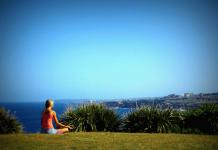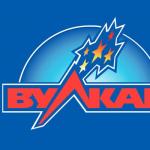The interior design of a restaurant is an important detail that can help attract the maximum number of visitors. Just think about it: why do people visit such places?
That’s right, in order to relax, enjoy the cuisine and, of course, the surrounding atmosphere. If the atmosphere is uncomfortable or uncomfortable, then a visitor who has visited once is unlikely to want to return there, even if the dishes offered were simply amazing.
The general atmosphere in the restaurant premises should contribute to a pleasant pastime, evoke a desire to stay in the establishment for as long as possible and return again. That is why in this article we will talk about such a pressing issue for restaurateurs as restaurant interior styles: we will get acquainted with the main factors influencing the selection criteria and understand the possible design options.
First of all, we need to understand not at all how the beautiful interiors of restaurants and cafes are executed, but what your establishment will look like.
First steps
Before setting a task, try to answer basic questions that relate to the following:
- How does the establishment stand out among its competitors?
- How popular can a restaurant be, according to the preferences of potential visitors?
- And finally, how will the emotionality of the design be manifested?
You don't need instructions to get the answers. You just need to have an idea of the cuisine offered, take into account the seasonality of the establishment and its location. Get to know your main competitors and their chosen design styles.
The photo above shows the premises of a restaurant located in the Maldives. The building is located under water at a depth of 6 meters. It’s hard not to agree that he really stands out among the rest. Although the price of such a structure will probably surprise you even more.
Since we talked about why interior design in a restaurant is needed in the preface, let’s move on directly to a more detailed review of the criteria, taking into account which, you will certainly be able to choose the most optimal option.
Why you should familiarize yourself with the kitchen first
Why not start by meeting the chef? Based on practice, restaurateur experts say that this is an important step.
He may well introduce you to the main dishes, including specialties, which will radically influence your choice of style. Still, we should not forget that cooking is also a kind of art that requires the harmony of the same environment.
Now let's look at it from the other side:
- Let's assume that your establishment offers simple, no-frills dishes that are quite popular among most visitors. In other words, universal.
- In this case, the interior of a restaurant in a European style could come in handy, emphasizing laconicism and some restraint.
- It is always necessary to take into account the territorial affiliation of the establishment. After all, the cuisine that is traditional for the population can be complemented by a design that is familiar to the population, which will undoubtedly attract a considerable number of people who want to visit such a place.
- In the case where unusual dishes are served or there is a mixture of several directions, then the general appearance of the room, of course, should in some sense prepare the visitor for eating such food.
Pay attention! Decorating an establishment in the spirit of the national identity of visitors can be done in more than one way. For example, in an Italian restaurant it is permissible to reflect not only today’s Scandinavian style, but also to introduce the visitor to history by decorating the rooms in the spirit of Italy of the 16th-18th centuries. Country design will also fit quite well. After all, a restaurant with a beautiful interior is not necessarily ultra-modern.
Functionality is an important criterion
When planning the interiors and design of pubs, restaurants, cafes and generally any similar establishments, do not forget about functionality:
- Aesthetic design should be combined with ease of movement, furniture arrangement, and comfort.
- It is necessary to pay attention to possible zoning corresponding to the layout of the halls, sufficient width of passages, and so on.
- Staff should be able to easily deliver food to its destination without encountering any obstacles.
- If you manage to combine functionality and visual appeal, then this is almost half the success.
Comfort
For clients of the establishment, comfort is extremely important, which can be ensured with the help of the following:
- Proper lighting will provide comfort. You should avoid too bright light, perhaps a combination of warm and cold. There are a lot of nuances, the main thing here is to avoid mistakes.
- Be careful with sound. Acoustics can sometimes cause serious harm, for example, if the sound is reflected more than once.
- Technically correct ventilation and microclimate. The room should be neither hot nor cold. Humidity also requires control. But ventilation is necessary to prevent odors from the kitchen from penetrating into the living room.
- And, of course, it’s worth mentioning comfortable furniture. Regardless of the style, try to avoid items that are too hard or uncomfortable.
The most popular styles that have been applied in the most popular restaurants in the world: image galleries and short comments
Now let’s turn directly to style solutions and get acquainted with the most popular options. Let's start with the luxurious and imperial: let's look at the historical interiors of restaurants and cafes.
Empire style
The Empire style is known for its monumentality, representativeness and high cost. It appeared during the times of Napoleonic France and, having been modernized with the passage of time, took root well among the non-poor segments of the population.
Gilding, painting, stucco, expensive wood, luxurious decor and rich textiles - all this is characteristic of the Empire style.
Baroque
But this direction is particularly pompous, demonstrating luxury, wealth and power:
- This interior is quite popular among restaurateurs who count on visits from the elite public.
- There should really be a lot of gold in this design. It is also characterized by: very complex ceilings, decorated with paintings, stucco, frescoes, and no less luxurious walls, decorated with moldings, columns, paintings and other elements.
- The combination of colors can be very diverse, but most of all Baroque loves white and golden shades.
Gothic
The Gothic style in the restaurant interior is no less popular. Being, again, a historical direction, it is no less expensive and also, in part, demonstrates luxury. But, nevertheless, the main feature of Gothic is a certain mysticism and mystery that cannot but attract.
Modern
Perhaps one of the most controversial styles, which is still controversial, but its prevalence is obvious.
The style is characterized by:
- Decorative;
- Asymmetry;
- An abundance of patterns and ornaments;
- The predominance of smooth patterns and lines.
Modern classics
The interior of a banquet hall in a classic style will always look organic. Calm tones, sophistication, natural materials, curls and carved elements - these are all the things that most clearly characterize modern classics.
The latter has a large number of directions. The interior in the classic style of the restaurant can be designed in French, English, Russian, Italian style and many others. And, despite a certain nationality, common features will still be present.
English style
- The English style in the interior of a restaurant is, first of all, aristocracy, moderate luxury, and an abundance of wooden elements.
- The color scheme can be either dark or light. Here everything depends on the time period that the design reflects.
- Exquisite carving, comfort, coziness and lack of frills give the style a special charm.
Turkish style
- Turkish style in the interior of a restaurant may well emphasize nationality.
- Although in modern times it is also used in European countries, actively mixing it with other directions.
- Wealth, comfort and a variety of painted elements can significantly transform the overall appearance of the room and emphasize the status of the establishment.
Provence
The French style in the interior of a restaurant may well be presented in the form of one of the varieties of country trends. Provence is distinguished by its sophistication, a certain romance, floralness and the predominance of light, pastel colors.
This style cannot be confused with any other, because it is immediately visible. Laconicism, graceful curls, aged elements, lavender and rooster figurines will immediately indicate that the room belongs to Provence.
Japanese style
Japanese style is very popular all over the world. The original, albeit specific cuisine, did not leave many indifferent:
- Harmony and comfort;
- Belonging to nature and everything natural;
- Minimalism;
- Partitions and sliding structures;
- The tendency of pieces of furniture downwards.
All these are characteristic features of the Japanese direction.
Modern styles
The main modern styles that are actively used in restaurant design include:
- Hi-tech;
- French style;
- Minimalism;
- Loft;
- Chinese direction and many others.
Take a look at the photo gallery and get to know the interiors visually.
We also offer you to watch the video in this article: “Do-it-yourself interior design of a mini-restaurant.” It will be useful for those who decided to try to create their own design and turn ideas into reality.


Not only delicious cuisine and fresh food are the key to success among visitors, but also a pleasant atmosphere is needed, so the unique interior of a cafe is an important task for every establishment owner. Guests often stay where the atmosphere encourages eating, where they want to spend an evening with family, a holiday, or just sit at lunchtime. That is why the right design is the key to the heart of any, even the most avid gourmet.
Bringing an idea to life
Like styles for apartments, there are a great variety of cafe design projects. Just look at the photos of travelers - each country has its own food traditions, many of which have been borrowed by food establishments. Regardless of the façade, the inside of the hall can be designed as required by the author’s imagination. With the help of proper design, you can express the main theme and style of the establishment, its focus on a particular target audience, and even its pricing policy.
Before you start working on bringing your plans to life in a cafe, you need to:
- Clearly plan the location of seats, wardrobe, technological area and kitchen. Of particular importance here is not only the unusual interior, but also its functionality and convenience for both visitors and staff.
- Pay special attention to the furniture: it should support the general background or be in contrast with it. Convenience is also important here.
- Choose the right curtains, mirrors, paintings, photos that will create an atmosphere of comfort and emphasize the individuality of the restaurant or cafe.
- You can’t ignore other rooms, because in addition to the hall, visitors visit the toilet room, and in many cafes there are hookah bars and other rooms where clients have access.
- Correctly format bar counter if available. It should stand out and be, if possible, equally accessible to guests sitting both closer to it and further away.
It is not difficult to decorate a restaurant in an unusual way, since the modern construction market offers various options for materials with which the most daring ideas can be brought to life. To generate the project, professional designers are involved, and the work is carried out by construction teams who will do everything on time and at a high level.
Unusual cafe interior styles
The most creative, perhaps, can be considered loft style. You can often see photos of cafes where the main element of the room is brick walls. The birthplace of this style is New York, and it arose, oddly enough, due to a banal lack of money for improvement. In our country, lofts have recently appeared; previously, a brick wall was simply not accepted and was considered unfinished. Now it is popular all over the world and is considered unusual and trendy.
A positive quality of this style is the savings on finishing materials. It is enough to simply place a cafe in a brick building, lightly cover the walls with matte varnish or bright paint for greater effect, and add individual details to the design that accentuate attention.
Design projects in the oriental fusion style are also interesting. Both folklore motifs and industrial simplicity combined with thematic accents (fabrics, tiles, lamps) can be present here. Lighting plays a major role here - these are not ordinary lamps, but creative light sources in the Asian style. This is how you can decorate a cafe specializing in Caucasian or oriental cuisine.
Its description is quite simple: modernity in everything. This includes furniture, materials, bold color combinations, and lighting.
Advice! The use of a large number of mirror and glossy surfaces will add special chic.
Choosing furniture
Any project requires the presence of furniture, and it should not only be beautiful and suitable for the interior, but also have functional features. First of all, convenience for visitors is important, so that they do not have the desire to quickly finish their meal and leave, but want to stay longer. The furniture of each establishment is different, depending on the theme of the restaurant or cafe.
It is becoming increasingly difficult for participants in the modern market to attract their consumers. Especially when it comes to organizing public catering places, regardless of the price category or target orientation of the establishment. Fast and high-quality service, a well-developed and varied menu are undoubted advantages, but few people can be surprised by this today. That is why the vast majority of entrepreneurs today prefer to order restaurant interior design from professionals.
The modern consumer returns to his favorite establishment to plunge into an atmosphere of comfort, peace and feel the touch of something beautiful. Only a carefully designed design project can ensure compliance with all these high requirements.
Polaris Design works to create the environment for catering organizations of any type. In our portfolio you can see examples of completed projects for:
· Restaurants and cafes;
· Pizzeria;
· Snack bars, canteens;
· Confectionery and chocolate shops;
· Children's cafes.
Polaris Design specialists will help you develop the design of a cafe with a variety of themes, while maintaining a single design concept. As a basis for the image of the interior, a good solution would be to also use national themes, stylize the interior for different historical eras, experiment with design styles - there are an endless number of variations here.
What helps us develop a cafe design?
The main purpose of commercial space design is to attract new clients and form a permanent client base. To achieve our goals, we take into account several important factors when creating a design project:
1. Needs of the target audience. Before ordering a restaurant design, the business owner must determine for himself who exactly he plans to serve. In fact, an accurate determination of the target audience will be the key to business success;
2. The right choice of the basic design concept will help you develop a bar design from the point of view of greatest efficiency. The main motif that will affect all decorative elements, including furniture, dishes, small accessories;
3. Compliance with technical requirements. Before ordering a bar design, it is important to at least roughly imagine the placement of all communications in the room. Ventilation, air conditioning systems, electrical wiring, sewerage and gas - all this is important to fit into the overall interior as harmoniously as possible, to provide convenient access to communications for bar staff.
Cost of ordering restaurant design
The cost of a restaurant design project, as well as the possibility of developing a corporate identity, is calculated individually.
The design of the cafe, complete with quality service and delicious cuisine, creates the mood of visitors. A novice restaurateur needs to work out the design of his establishment with special attention. Naturally, any cafe is designed for a certain category of guests. Business people will not be comfortable in an interior with futuristic motifs, and young people will quickly get bored in a luxurious classic setting. However, the design project of a cafe must be of such high quality that even a casual visitor becomes a regular. The main goal that a designer should pursue is the creation of an unusual, original establishment, which nevertheless retains its comfort. People come to cafes to relax. The more pleasant and comfortable the time spent in an establishment is, the more often they will return to it. Let's talk about the most important thing - about the styles that are embodied in the interiors of the cafe.
Choosing a cafe style
Stylistic diversity opens up space for imagination. Decoration is perhaps the most pleasant and at the same time time-consuming stage before the official opening of your own establishment. The design will include a “tasty” interior and an alluring exterior. The interior decoration consists of the layout of individual rooms and zones, decoration, lighting, color scheme and decor, which polishes the style. First, you need to determine what category of people your establishment will be designed for. Cafes are classified into the following types:
- Coffee shop. Making an invigorating drink is a priority.
- Small cafe. It offers a “full” menu, but the dimensions of the premises do not allow it to accommodate a large flow of visitors.
- Luxury cafe. Such establishments almost reach the level of restaurants and receive mainly elite visitors.
- Pub. An establishment with night opening hours, where guests can have a glass or two.
- Cafeteria. The restaurant's menu is the same as in a cafe, but it operates on the principle of self-service.
- Budget fast food. A very popular option for serving “junk” food. The name “fast food” replaced the domestic buffet.
- Cafe with healthy food. Designed only for a certain category of people. The location of such cafes near sports complexes is relevant.
- Sports bar. It hosts live football and hockey broadcasts every day. Alcoholic drinks are offered to guests.
- Art cafe. A youth institution that welcomes creative individuals, where they can discuss issues of art.
- Dining room. A spacious cafe that receives a large flow of visitors every day. Usually located near large enterprises, office centers, banks. On weekends, celebrations are often organized here: banquets, weddings, anniversaries.
- Lobby bar. The establishment is located in the lobbies of hotels and inns. Intended for visitors and tourists. The cuisine is usually multinational.
Recently, more and more multifunctional cafes have been opening, which are more like small restaurants. Among the variety of styles, the following interior solutions can be noted:
- Loft or noble industrial. The style is now experiencing a real “boom”. Its calling card - brick walls are used in half of the fashionable interiors of houses and public institutions.
- Retro. The trend is relevant in narrow circles of connoisseurs of antiquity. Usually they reproduce the atmosphere of American jazz clubs, which were visited by ladies in fur coats and gentlemen in ties. Such cafes attract a bohemian audience who can plunge headlong into a new world of luxury and elegance.
- Russian. In this style, the main room is styled as a tavern with massive wooden furniture and a horseshoe over the entrance (for luck, as the saying goes).
- Fusion The direction is a stylistic potpourri. Fusion is classified as a more modern eclecticism. The style allows you to decorate the cafe in an unusual but cozy way. A complex interior solution will attract visitors from the “informal” category.
- Country. Rustic style that is characterized by simplicity. It allows the owner to save on finishing, but at the same time decorate the room in an original way.
- Provence. The classics of the French countryside are characterized by lightness and grace. For decoration, old furniture is used, which will look appropriate and organic in such an interior.
- Chalet. The direction arose on the Alpine slopes. It uses wood and natural materials. The facade is decorated with panoramic windows, and a fireplace will be a special sign of comfort.
- Eco style. Modern man is drawn to everything natural, which is why the interior emphasizes closeness to nature. For example, the central hall can be decorated with wooden logs instead of chairs, and compositions made of branches will act as the main decor on the walls.
- Disco style. Suitable for those who are nostalgic for the crazy 80s. The cafe's decor will be flashy and provocative, using bright colors and posters of musical groups that were popular in those distant times.
- Empire style The direction is graceful. Floral ornaments and floral patterns are used in decoration. The furniture is neat on twisted legs, decorated with handmade carvings. The room is decorated with stucco.
- Modern. The style is characterized by lightness and unobtrusiveness. The interior is dominated by pastel colors and natural materials. The direction has taken an intermediate position between luxurious classics and laconic modern styles.
Separately, it is worth noting the ethnic style. By styling a cafe after a specific country with national cuisine, the owner will kill two birds with one stone:
- It will attract people from this state who miss their homeland to the establishment.
- It will lure locals who want to taste the exotic.
We often open cafes in ethnic style of two types:
- With interiors and cuisine from neighboring countries: Uzbek restaurants with traditional Tashkent pilaf, cafes with nostalgia for Armenia, or Ukrainian “huts” serving rich borscht and dumplings.
- Stylized as an establishment in exotic countries for domestic visitors. This includes Greek, Italian, American, and Mexican cafes.
Let us dwell on some styles, a detailed description of which will explain the reason for their popularity in the interiors of modern cafes.
In ethnic establishments, it is desirable that the staff speak the language of the country in whose style the interior is decorated. If you comply, then in everything.
Classic
Wood will prevail in classic decoration. It is used both for decoration and furniture. However, these are not rough country wood surfaces, but finely and carefully processed elements. Textiles use natural, “heavy” fabrics with delicate, elegant patterns. The classic style is not suitable for small rooms (less than 15-20 sq.m.). The problem is that in limited spaces it is difficult to implement it without losing some of the charm and luxury. Classic decor is very restrained; the style does not accept an abundance of small details that threaten to turn the interior into bad taste. The ceiling and walls are decorated with stucco; the entrance can be supplemented with an arched vault supported by columns. The main door is painted noble white and decorated with a gold handle and carvings. The color palette is dominated by brown, chocolate, olive, and golden. Crystal is also used in decoration: glasses, figurines, chandeliers. Classic style is more suitable for the interior of a restaurant.
The design uses simple geometry. It is unacceptable to overload a classic space with complex configurations.
Modern style
Modern interiors strive for laconism and simplicity. It cannot be said that this style has completely abandoned luxury, but it has become less flashy and more restrained. The direction was created in opposition to traditions. The interior colors are dominated by gray, white, black and accent bright touches: blue, light blue, violet. The classic embossed ones have been replaced by perfectly smooth surfaces. The preferred materials are metal, plastic, natural stone and brick. The room is decorated with marble tables, soft poufs and “pears” in the center of the room, stylish lamps of unusual shapes, and bright tableware. You shouldn’t forget about catchy shades, as they will help dilute the overall “sterility” of the atmosphere and bring coziness. Also, the room must be decorated with numerous lamps, sconces, and ceiling chandeliers. Lighting is developed on three levels, and special attention is paid to point light sources that highlight the advantageous aspects of the interior.
Minimalism
Minimalism is characterized by simplicity in design and an almost complete absence of decorative elements. A guest from the east came to us a couple of decades ago and has established himself in interior design for what seems like many years. Style loves freedom, large spaces, which seem even more spacious due to the light. However, so that the room does not create the impression of a continuous canvas, it must be zoned. It is relevant to use screens or decorative partitions between tables. Visitors will have the opportunity to delimit their personal space and at the same time remain part of the common room. In the color palette, primacy is given to white. The color of purity is emphasized with grey, black, blue, yellow. Stone, brick, wood, and plaster are used for decoration. The surfaces of the materials are deliberately not processed in order to emphasize their naturalness. The style is also characterized by an abundance of glass, in which rare decorative elements are made. Minimalism adheres to simple lines and shapes, excluding any “geometric” experiments.
Marine theme
Marine style is considered a favorite option for interior design in country houses on the beaches. Cafes, which are usually scattered along the embankment at the service of vacationers, also give preference to this particular direction. In cities where they only dream of the south before a vacation, an establishment decorated in a maritime style will evoke pleasant nostalgia and help you truly relax, as if you were on a good vacation. The palette of shades uses a “quartet” of tones: green, blue, indigo and white. The brown colors of the wood of the deck boards and steering wheels join their strong company. Furniture upholstery and textiles traditionally feature sailor stripes. In the decor you can use anchors and ships in bottles, telescopes, navigation devices, sails, lifebuoys, and tackle falling from the ceiling. An original solution would be to design the doorway in the shape of a steering wheel, the “spokes” of which will diverge to the sides along the walls. The windows are made small, like on ships. One of the accent walls is covered with photo wallpaper depicting an old world map or a treasure island. The design is printed on a “sheet” with charred edges on paper that has become “yellowed” with time. Some restaurateurs go further and embody the pirate theme in certain areas of the cafe. For example, the VIP room is decorated with massive chests with artificial gold, cages with live parrots and old lanterns as lampshades.
Eastern style
Cafes in oriental style look unusual and fascinating. In interior design, it is imperative to develop soft, diffused lighting that gives a warm light. The floor is covered with tiles with ornate patterns. Complex patterns are one of the main features of the style, which is used on almost all surfaces. The tiles are partially covered with soft rugs. The seating areas are low and always decorated with numerous pillows. In oriental cafes, as a rule, guests are offered to smoke a hookah. It is more convenient to do this in separate rooms, which are separated from the common room by translucent curtains. Doorways are decorated with arches with characteristic vaults that have a sharp, elongated tip exactly in the middle. The room is decorated with a large number of round lamps that hang from the ceiling at different levels. In the color scheme, preference is given to shades of red, brown, and blue.
Italian style
The Italian style has retained many of the features of Baroque, which at one time gained wild popularity in this country. The palette of shades is dominated by brown, olive, terracotta, cream, orange, yellow, and brick. The finishing uses a combination of relief plaster, raw stone and solid wood. Moreover, noble varieties of the latter are chosen to emphasize the light luxury of the interior. The interior design uses massive, low furniture, which is decorated with upholstery with floral patterns. Alternatively, you can choose lightweight wicker chairs instead of stools. Collages of photographs are hung on the walls. Untreated ceiling beams and supports, which will also serve as conventional boundaries of combined zones, can become an important decorative element. Textiles chosen are richly decorated with patterns. Tables are usually covered with checkered tablecloths. The decor uses indoor plants, wicker elements, and wine bottles, which are taken outside the bar.
Japanese style
Japanese style is an integral part of the oriental one. He has retained its main features, but he himself is not devoid of individuality. Interior design in accordance with the canons of this trend is relevant for sushi bars and cafes with cuisine of the same name. Light-colored wood is used for decoration. The walls and ceiling are decorated with panels, which are used everywhere in the land of the rising sun. Seats for guests are decorated with low tables and mats or chairs without legs. The establishment is decorated with luxurious imitations of vases from the Ming era, panels depicting cherry blossoms, voluminous lanterns, and a path of flat stones right on the floor. The interior is decorated in neutral colors: white, black, brown, gray. The windows are covered with panel curtains made of silk, cotton, and linen. There must be live plants in the room.
Rococo
Rococo will be a good option for those with a fine artistic taste. In the room, the corners are slightly smoothed, as the style prefers smooth lines. The presence of high ceilings is one of the features of Rococo. The walls are decorated with expensive fabric wallpaper with the finest patterns. Light wood, ceramic tiles and marble are also used for cladding. In Rococo, a large amount of stucco is used, which is covered with gilding on top. The windows are covered with heavy curtains made of natural fabrics with the same floral pattern. The central element of the decor will be a huge crystal chandelier with light bulbs installed like candles. The prevailing shades are white, brown, wine, turquoise, blue, and pink.
Hi-tech
High-tech interiors are modern and cozy, but it will be difficult for those who are all for tradition to stay in them. For this reason, the high-tech direction will give comfort mainly to the younger generation. This nuance should be taken into account when developing the concept of the establishment. Plastic, chrome and glass surfaces, untreated brick and stone are used in the decoration of walls and ceilings. The lighting is multi-level, neon-cold. It is better to lay the floor with a self-leveling floor with a glossy sheen. The furniture used is simple, with strict line geometry. The main shades are grey, white and black. The trinity can be supplemented with lilac, blue, red, cyan, yellow, that is, any color that is emphasized with appropriate lighting. The windows are panoramic. They are curtained with stylish blinds. Art objects in the style of cubism, constructivism, and futurism can serve as decor. They dilute the cold, technological atmosphere with indoor plants in square or triangular pots.
Some cafes create a separate children's area where parents can send their children and relax in peace. However, recently entire establishments that are designed only for children have been gaining popularity, a kind of culinary Disneyland for little ones. The central hall is usually divided into three zones:
- Common for all children;
- Boys' area. A recreation area for young pirates, robbers, astronomers, machinists and roboticists;
- A playground for girls where young princesses will find entertainment to their liking.
Any children's cafe should focus not on healthy but tasteless food (as most of us believed in childhood), but on confectionery and ice cream. Typically, children are taken to such establishments for special occasions, so the restaurateur should provide for the presence of a mini-banquet hall. Children's cafes are designed based on fairy tales, with bright decorations on the walls and similar decor. Sometimes they provide presenters with entertainment programs that will make the children’s holiday more vivid and memorable.
The restaurateur should also arrange a relaxation area for parents, that is, those adults who will come to look after the young company. The area should be separate so that children are not disturbed, but with a good view.
A summer cafe can be of two types:
- A separate establishment that operates exclusively during the warm season and closes when cold weather sets in.
- A food court, which is attached to the main establishment and offers guests the choice of an additional area for relaxation.
As a rule, the summer zone is moved either to the backyard of the establishment, or directly in front of the facade and storefront. The terrace is equipped with light furniture. Be sure to have an awning on the roof, which will protect you from accidental rain. The summer cafe is decorated with potted indoor plants, dwarf trees, and curtains in improvised “windows” that help protect from the wind and scorching sun.
The design of the hookah bar can be either modern or according to the canons of the classic oriental style. In the first case, smooth surfaces are used in the decoration, furniture of strict shapes, an abundance of white, and neon lighting. In the oriental style, tiles and textiles with a large number of subtle patterns are used. The main thing that should be provided in such an establishment is the presence of separate areas where guests can safely smoke a hookah. In some cafes, this service is included in the list of additional ones and for visitors who want to smoke a couple of smoky rings, they create separate places outside the common room.
Karaoke cafes are considered more of a nightlife establishment. Of course, serious people can come here solely for the purpose of “stretching” their vocal cords, but much more often the stage is taken over by guests liberated by alcohol. A large number of the latter occur on Friday and Saturday evenings. There will be a rush at the karaoke bar ahead of the weekend. There are no strict restrictions on the type of interior design in an establishment. For example, a restaurateur can successfully embody country or Italian style in decoration. However, the common hall must be designed in such a way that visitors can easily observe the stage from any point.



















